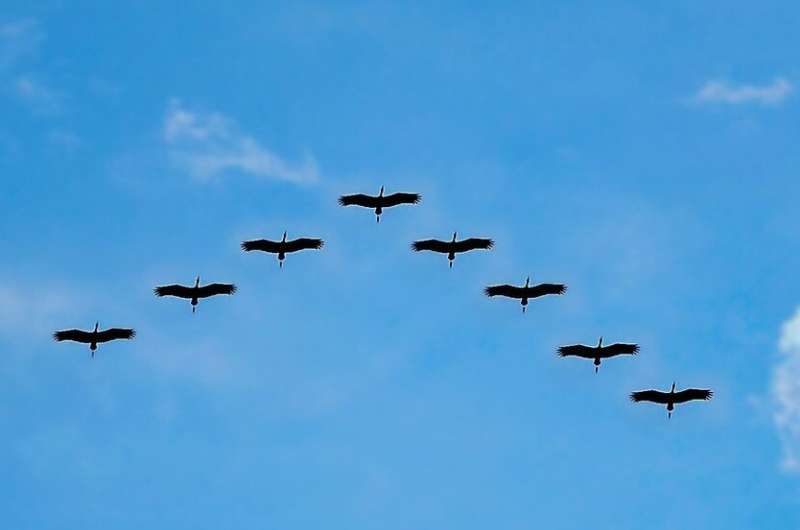Are animal migrations social?

Migratory animals include a wide range of species—from tiny insects to the world's largest marine mammals. To achieve their journeys, migrants must walk, swim, or fly, often traversing complex landscapes that requires many choices about where, when, and why to move. Despite the diversity of migratory journeys made by animals, most scientists who study migration have a taxonomic focus—meaning that they study a particular species or group of species that migrate.
To better understand when, how and why social interactions shape migration, an all-female team of Konstanz scientists brought together research from 100 scientific publications spanning a diverse range of species and ecosystems. Through this synthesis, these researchers suggest that social interactions and social learning during migration are likely more widespread than previously thought.
The research took place at the Centre for the Advanced Study of Collective Behaviour at the University of Konstanz and the Max Planck Institute for Animal Behavior. The review article was published online in Trends in Ecology & Evolution.
Key findings:
- Migration itself creates a unique and challenging situation where social interactions are likely to be particularly beneficial. For example, migration is often timed with the changing seasons and as a result, the time available to explore and learn through individual experience alone is limited.
- Migration increases interactions between individuals that otherwise may not interact, providing opportunities for information exchange and learning. For example, some songbirds that are thought to be solitary move en masse through the sky during night-time migrations. Likewise, animals that are territorial during other parts of the year may change this behavior during migration. The synchronized nature of migratory movements brings together individuals from different groups, families, populations and species.
- There are many ways animals can gain information from other individuals to improve their performance during migration. For example, even animals that travel alone can benefit from social information, by listening to distant vocalizations in the case of migrating blue whales or by following scent trails of other solitary carnivores. Likewise, migratory animals can learn from individuals of the same species or from other species.
The authors see great potential in "next-generation tracking" methods to understand social interactions between animals. "Next-generation tracking" techniques include approaches like lifetime tracking (monitoring movements from birth to death) and group tracking (recording the whereabouts of an entire group of animals on the move), which share the characteristics of combined technological advances in animal tracking with novel study designs.
The review also highlights wildlife reintroductions and translocations as opportunities to study social aspects of migration. The authors encourage future research that takes advantage of these wildlife management actions to provide new insights into animal migration and help to enhance existing efforts to conserve and protect animal migration in a changing world.
More information: Ellen O. Aikens et al, Viewing animal migration through a social lens, Trends in Ecology & Evolution (2022). DOI: 10.1016/j.tree.2022.06.008
Journal information: Trends in Ecology & Evolution
Provided by University of Konstanz





















